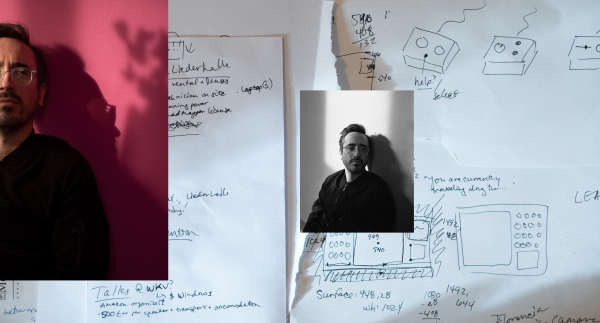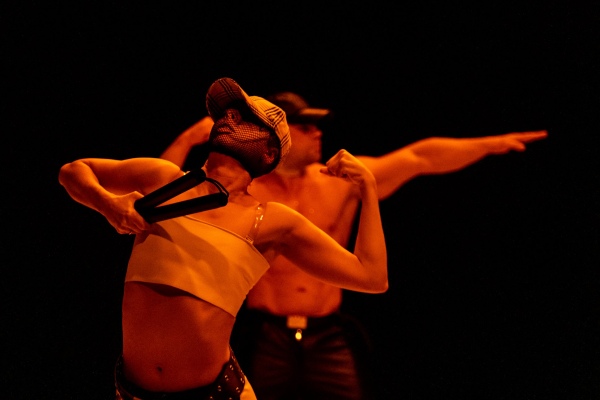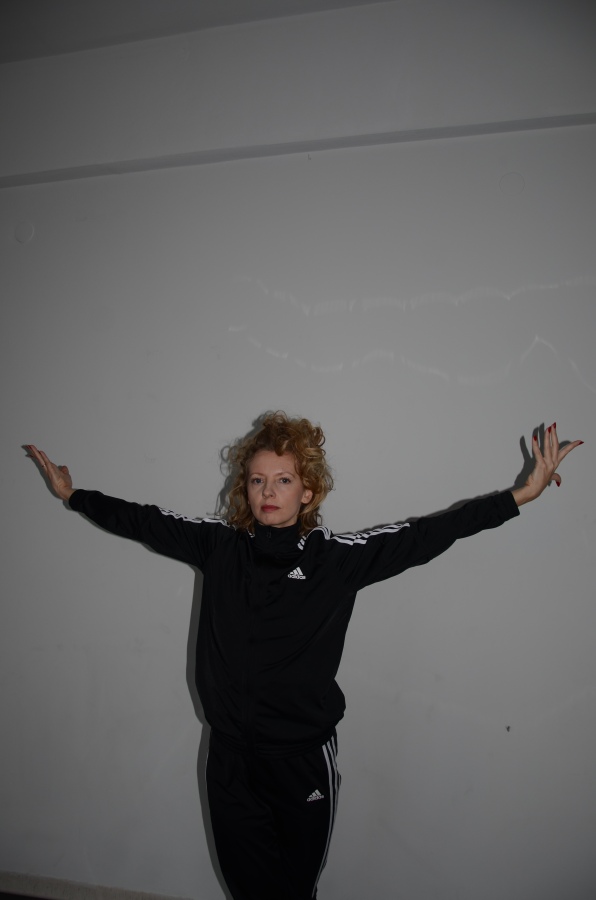Transforming the luxury archive
Iza Szostak in conversation with Dominik Skrzypkowski
-
In the project that you are doing for your choreographic residency at the Castle, you evoke the 1990s and Poland’s transformation, or transition from communism. Why are you fascinated by this period?
- These are times that I vividly remember because that’s when I was growing up. I watched my parents take up all kinds of odd jobs that the nascent free market made possible. My dad made and sold aquariums, and installed satellite dishes. My mum sewed patchwork pillows, which on weekends we peddled at the Decennial Stadium open-air market. During the week, she catalogued VHS tapes at the “Home Cinema” video rental she ran in Mokotów. Working, earning, and making money were priorities. A middle class was emerging, awkwardly copying stock-image Western standards. Few of us had any economic capital, but we quickly became knockoff masters [laughs]. Amid all that transitional chaos and legal ambiguity, there were also those who were doing pretty well. They showed off their wealth through pleasures, fetishes, and adornments that you theoretically didn’t need in normal life. Those were luxuries that few could afford at the time. I’m interested precisely in that social stratification and a radical differentiation of life models in the nascent Polish capitalism.
-
Before setting to work, you’d described your concept in quite close detail. Now you’re reviving it in rehearsals. How is it changing relative to the original proposal?
-
It’s changing all the time – in fact, it will be the project’s third edition. The work started over a year ago at Studio Hrdinů in Prague, and then we did a presentation at Warsaw’s Centrum w Ruchu. And “reviving” is actually a very pertinent word, but also a controversial one in the context of what we’re doing [laughs]. Organised crime was a characteristic phenomenon of the Polish transition in the 1990s. Reifying aliases, incriminating testimonies, key witnesses, changes of identity or appearance, robberies, murders, extortions, business meetings disguised as lavish parties, holidays in exotic locations and so on. Viewing “funny archives,” i.e. YouTube videos – fragments of interviews with former inmates, their partners, and witnesses of mafia wars, I discovered that the criminal or investigative aspect didn’t really interest me so much in the context of this edition of the project. This time, I’m preoccupied with the idea of changing the course of history. Fantasising and making projections about those times, as inspired by aesthetics and customs, fashion, way of life, language, or body images.
-
-
Is it important for you to anchor the project in the social realities of the era or are those realities just a background, a context for artistic ideas?
-
In skaj is the limit we reflect on what would have been if the hero of the Polish transition wasn’t a white heteronormative man in white socks. An aspiring reader of Sukces magazine with a knack for business and a black briefcase [laughs]. Actually, already when starting to work on the project I planned to transfer agency to the collective body, to let it speak through it. Now I’d like to reverse, re-accentuate historical records of the time. To queer the transformation archive and produce an alternative reality inhabited by flickering identities. A parallel identity, in which subjects will function on the verge of effectiveness, beyond the reproductive and familial time of heterosexual norm. What I mean here are non-human forms, objects that constitute an archive of Polish prosperity. Luxury and semi-luxury goods, such as crystal chandeliers made of plastic, leatherette sofa-and-footstools sets, wainscots, mirror drinks cabinets, electronic watches, cowboy boots, faux-diamond jewellery [laughs]. I’d like to give them a voice. And a body.
-
-

-
-
You speak of queering. The word that is very rich in meanings and connotations. What do you use it for?
-
Every transition period is a moment when very intense identity and identification processes occur. A moment of bulges and ruptures, a time beyond law, when performative gestures become possible. Discussing a spatio-temporal queer theory in The Queer Art of Failure, Judith Jack Halberstam isn’t necessarily referring to gays, lesbians, or bisexuals, but rather, in a queer spirit, to a non-normative community logic and organization, to distortions of social and cultural norms, driven, for example, by the institution of the family or market laws. For Halberstam, queer subjects are homeless or unemployed persons, drug dealers, sex workers, and so on – eccentric groups, living on the fringe, establishing their own rules of life. I guess such a view of what queer means will allow me to speak about exclusion and stigmatization, on the one hand, and care and empathy, on the other. The objects and archives that I give attention and agency to become witnesses of events, speak in a human voice, but their logic isn’t so logical in human terms.
-
-
What is the function of movement here?
-
Movement will be bound up with work on the object and exploration of the costume, which in a way transforms the body, modifying its parameters and undoing its easy classification under familiar identity categories. Choreographically, I have at my disposal three bodies of different build. This matters to me conception-wise. I’m interested in collective and engaged practices, but also in pointless tasks. A kind of virtuosity of coexistence based on weaknesses, failures, and small victories.
-
-
Do you notice a continuity with your previous projects?
-
I perceive matter as active and potent, and this is reflected in my works. Such an assumption opens up a vast field of exploration on the level of movement and imagination, and the object becomes a motif for working with choreography. Also the costume as an oversize solid figure or the hybrid are motifs that have recurred in my choreographic practice. Covering or uncovering the body, extending the limbs. Thinking about the techno-body, the cyber-body.
-
-
How important are narrativity and storytelling in what you do? Or are they not important at all? Has your approach to narrativity been evolving in any way?
-
Working on the context of the Polish transformation and the topic of the archive, I’ve noticed that the spoken word can be immensely important. When working on a text, I sometimes use sources, developing a story by collecting and remaking other people’s narratives; through interviews, whether conducted by myself or by others, experiences are shared. In this project, with dramaturge Anka Herbut, we have paid special attention to the language used by our interlocutors.
-
-
You’re working with a team you’ve worked on numerous occasions before. How do you divide the tasks?
-
I greatly appreciate my colleagues. I’ve collaborated for years with Kuba Słomkowski and Anka Herbut. Kuba writes music for all my shows, and with Anka Herbut we always spend a lot of time inventing worlds, naming various images, asking questions about the meanings they produce and how we can develop them. We collect ideas, and then strip them of the redundant layers, working out the piece’s framework and structure. We build a map of visual or textual references. Anka writes, edits the texts emerging through the collective process. During the development of skaj is the limit, we wrote a lot of texts together, the whole team, producing a body of texts on which Anka then worked, adding her personal style.
-
Another person who has contributed a lot of work to this project is Karolina Mełnicka. It was actually her who suggested to me the idea of taking a closer look at the 1990s. She is an author of costumes, which she sews herself, and is solely responsible for the visual aspect of the production. Each one of us works in a slightly different part of the field of art, but in the case of skaj is the limit these roles overlap. Our collaboration has been very fruitful and it seems to have no end [laughs].




